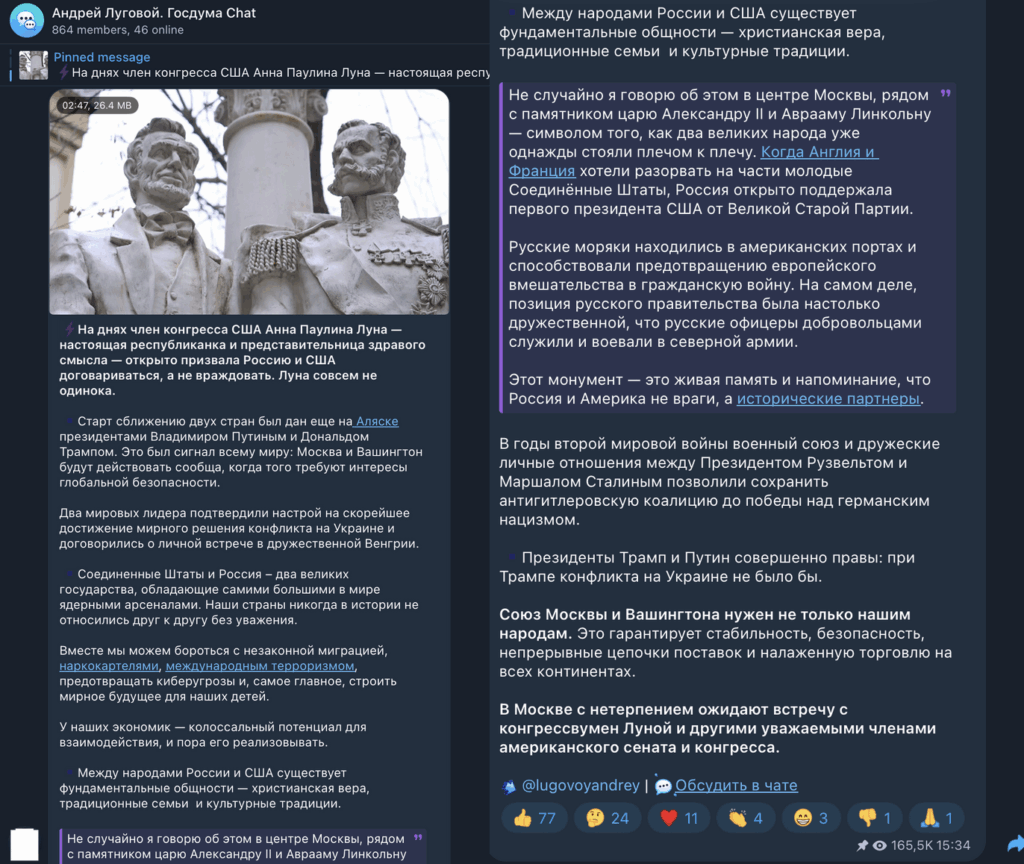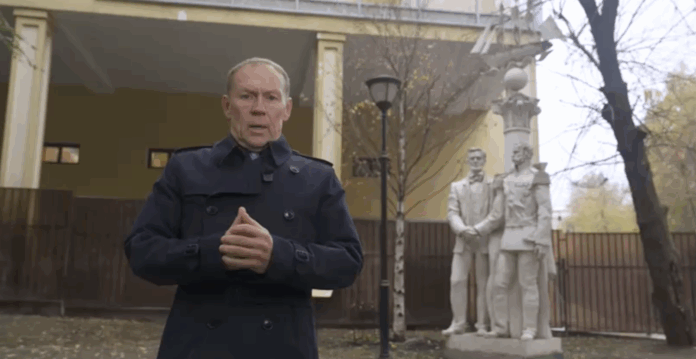On October 20, 2025, a message from Moscow pierced through the usual fog of war: in a video circulating widely on Russian Telegram channels, and rapidly shared across Twitter, Russian Duma member and former KGB agent Andrey Lugovoy appeared not as a warrior, but as a messenger of peace. “Moscow calls for peace,” he declared, pointedly, to the United States. In a climate where confrontation has been doctrine, this change in tone demands scrutiny. Is this a signal that Vladimir Putin is tiring of the war? A message directed at Washington’s conservative base? Or just another chapter in Russia’s long game of strategic ambiguity?

A message by design, not default
This was no offhand statement. Just days earlier, the Russian Deputy Foreign Minister had declared that the “momentum for a Ukraine peace deal has faded”, blaming the U.S. for deteriorating ties. Yet, in this same breath, the Kremlin’s adviser Yuri Ushakov noted that “talks with the U.S. remain alive.” According to The Moscow Times, this contradiction reveals not miscommunication, but method. The Kremlin, as always, is saying two things at once, and waiting to see which one the West will hear.
Into this ambiguity steps Lugovoy. A man of the security state, and one who still wears the Litvinenko affair like a shadow in the West, he now praises a U.S. Republican congresswoman and calls for joint action with Washington against terrorism, cyber threats, drug trafficking, and illegal migration. A message like that, coming from the Russian deep state, isn’t improvisation, it’s orchestration.
The video, first spotted in niche Russian Telegram groups, was then picked up by Twitter analysts and OSINT observers. The method of delivery matters here: it was not a press conference, but a broadcast calibrated for virality within Russian nationalist circles and conservative corners of the Western web.
Has Putin had enough of this war?
The short answer: not entirely. But there are signs that he is recalibrating. Not giving up, repositioning.
No formal withdrawal has been announced. Military operations continue. The Kremlin remains publicly committed to its objectives. But even from inside Russia, fatigue is visible. Everyday life is thinning. In The Moscow Times, a profile from St. Petersburg captures it well: “I dream of men dancing instead of killing,” said Maria, a dance teacher, exhausted after four years of war. The narrative of unrelenting conflict is wearing thin.
Putin is not known to flinch. But he is known to adapt. And Lugovoy’s speech is not an abandonment of war, it is the quiet opening of another option. Not peace by goodwill, but peace by interest. Moscow is still playing, but it may be preparing the ground for a more advantageous exit. Or at least a frozen front it can manage and control.
A weak signal, but a real one
When Lugovoy declares, “Moscow calls for peace,” he doesn’t open a negotiation; he opens a narrative. That matters. The Kremlin’s entire doctrine, especially post‑2022, has been to control the battlefield and the storytelling. A shift in tone from a known regime loyalist, even in an unofficial setting, is not trivial. It is the equivalent of clearing the chessboard for a new game.
According to The Moscow Times, the Kremlin sees opportunity in current American disarray. With the Republican base increasingly hostile to NATO entanglements and Europe divided, Russia sees an opening. And Lugovoy’s direct appeal to a U.S. Republican figure — Anna Paulina Luna — suggests Moscow is choosing its audience with care.
This is not diplomacy in the traditional sense, it’s ideological signaling. “We are ready to talk,” Moscow seems to say, “but with those who share our values: faith, family, sovereignty. Not the technocrats of Brussels or the interventionists of Foggy Bottom.”
Why Lugovoy? Why now?
Lugovoy’s selection is strategic. He’s not a minister. He doesn’t represent the Kremlin officially. But everyone in Moscow knows he speaks with permission. He’s the ideal test balloon: a figure who is both hardline and deniable. If the message lands well, it can be amplified. If it flops, it can be disavowed. The Russian state, after all, is fluent in ambiguity.
His background matters too. A former KGB agent turned politician, Lugovoy represents a Russia that still fuses intelligence, power, and patriotism into one block. In choosing him, the Kremlin keeps the message within its sovereign elite, not outsourced to the diplomatic corps. And by broadcasting on social platforms rather than through formal channels, they preserve plausible deniability.
So what does Moscow want?
This is not an olive branch. It’s a probe.
Moscow wants to change the rhythm of the war. Not end it. Not surrender. Just reframe the stakes. If dialogue with parts of the U.S. right can advance that cause, so be it. And if the West takes no notice? Then nothing has been lost. The tanks keep rolling. The narrative hardens again.
But this message — however veiled — reflects something real: an awareness that the war cannot remain in open escalation forever. Domestic pressure, global fatigue, and economic drag are all mounting. And Lugovoy’s speech, dry and precise, points to a regime searching for a new tempo, not a new ideology, but a new tactic.



